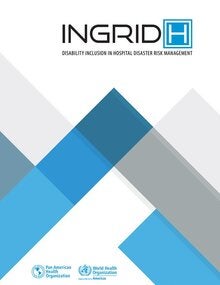The impact of disasters is greater in the Western hemisphere than anywhere in the world except the Asian continent. Around a quarter (21%) of all disasters occurring in the world between 2008 and 2017 took place in the Region of the Americas, creating 254,334 victims, and causing damage equivalent to approximately US$592 billion. The most common events were water- and weather-related, representing 6% of deaths and 79% of injuries in this period (12). In addition to hydrological and meteorological events, seismic activity, volcanic eruptions, landslides, and events such as fires and social disturbances, among others, can have major effects on populations, infrastructure, and elements such as health services, which are essential for providing care during and after emergencies and disasters...In supporting the efforts of the countries’ health sectors to comply with article 11—“Situations of risk and humanitarian emergencies”—of the United Nations Convention on the Rights of Persons with Disabilities (CRPD), this document presents a methodology for fostering inclusiveness in hospital disaster risk management, with attention to the needs of persons with disabilities (16). The methodology has been titled Disability Inclusion in Hospital Disaster Risk Management, using the Spanish acronym INGRID-H.
|

